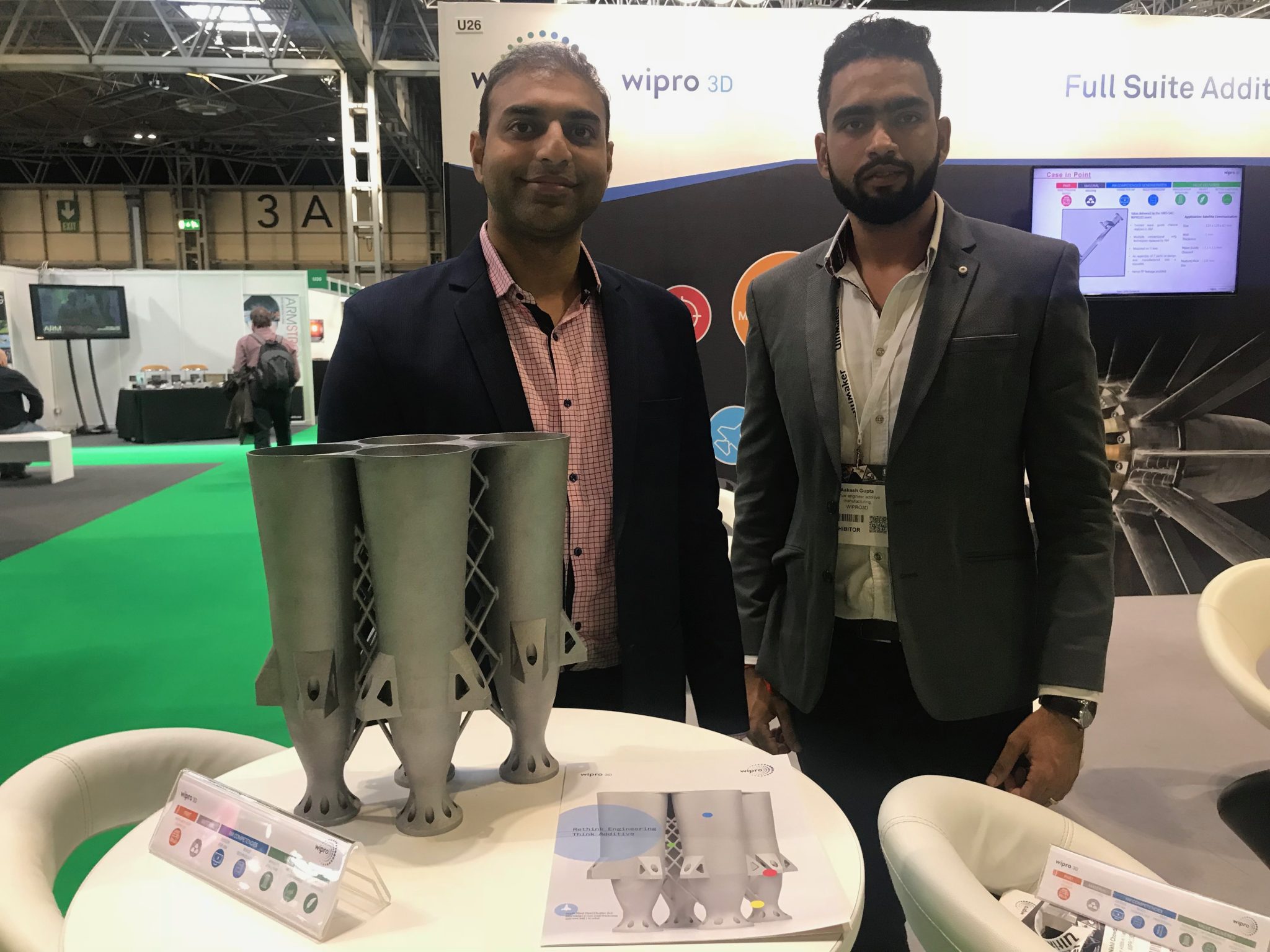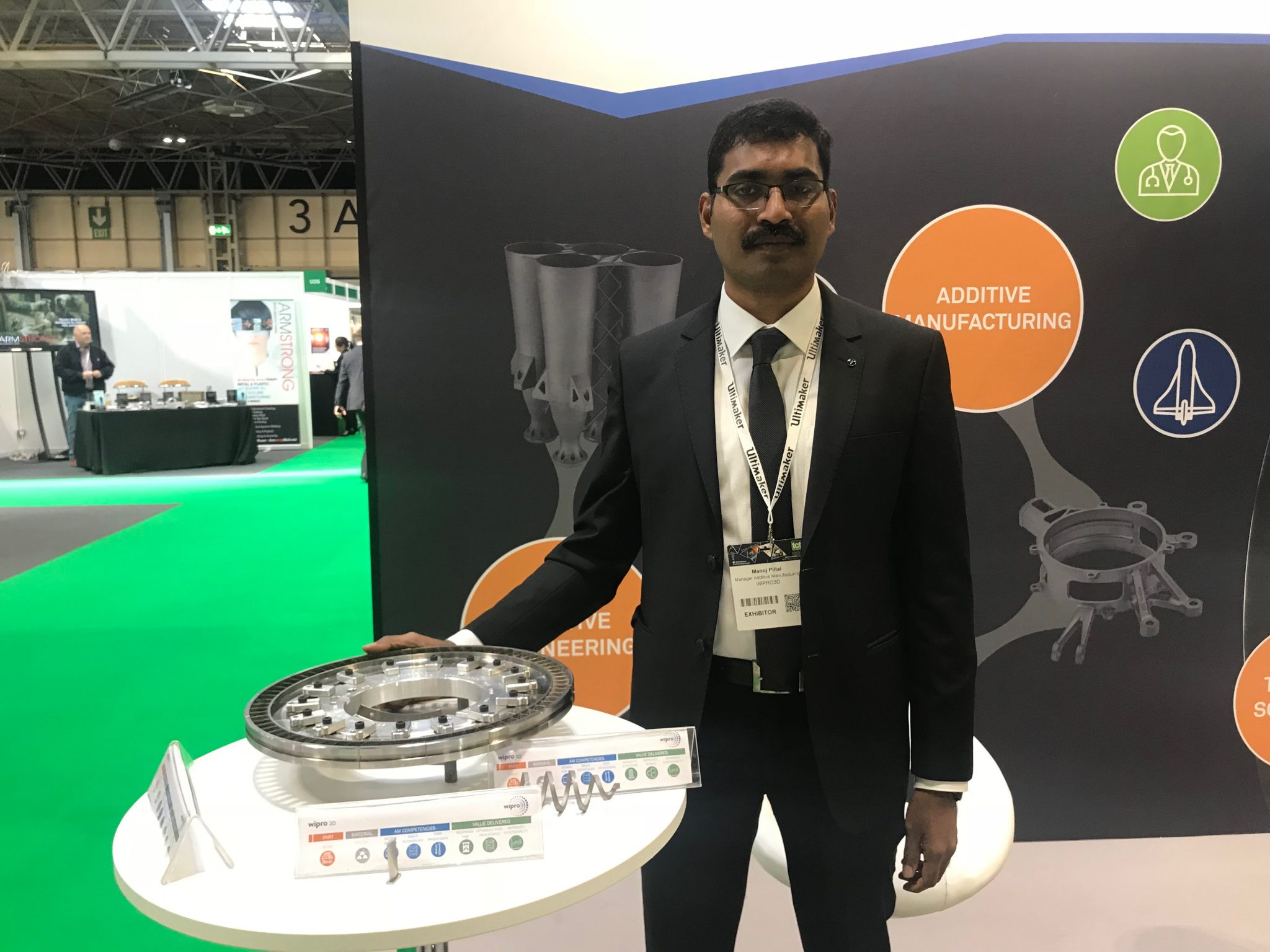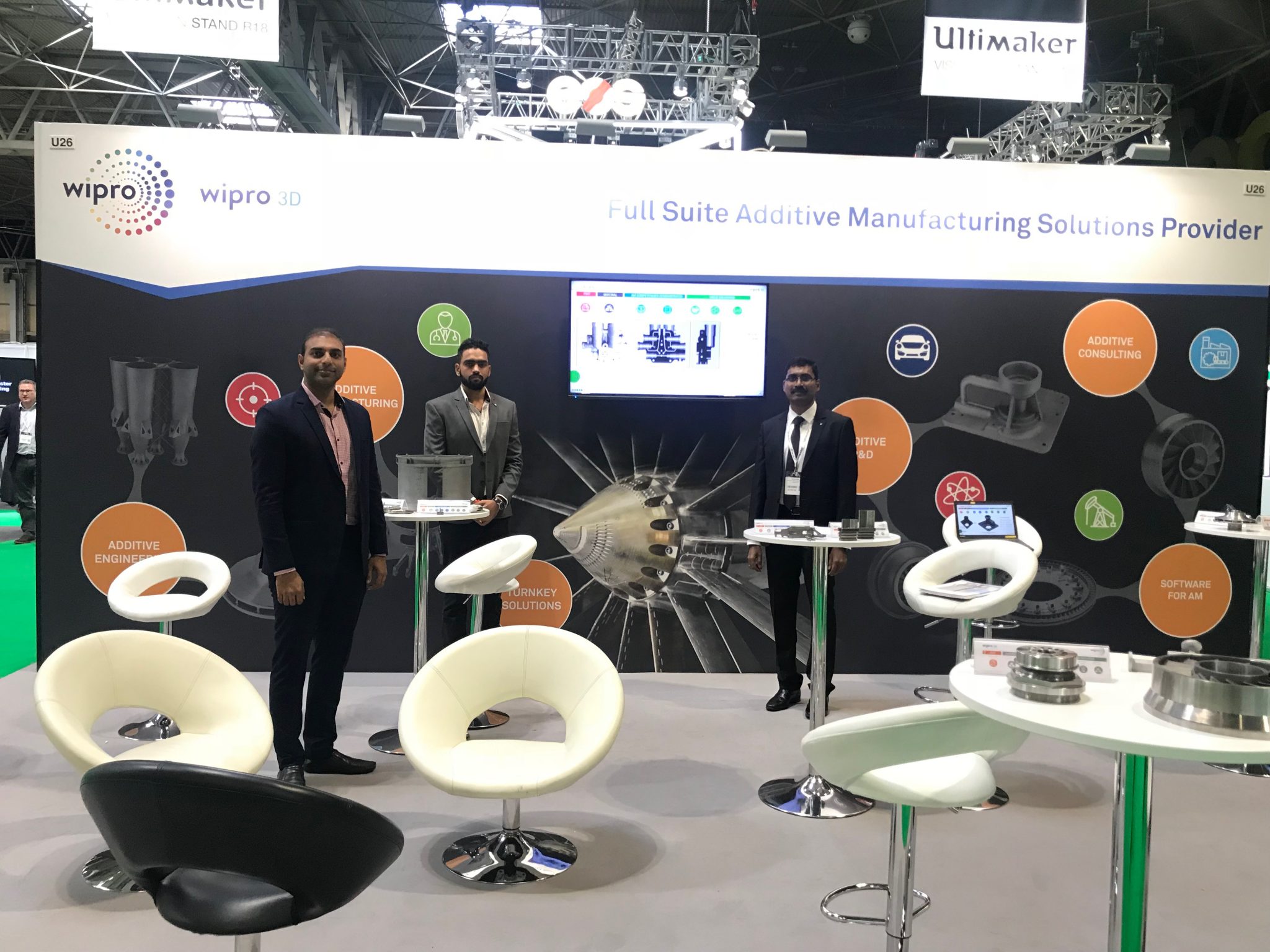Wipro 3D came into existence in 2012, and now deals with metal additive manufacturing solutions and services. Its largest markets include aerospace, space, defence, heavy engineering, industrial and tooling, automotive, healthcare and nuclear sectors. In March 2018, Wipro 3D inaugurated a metal 3D printing experience center at its headquarters in Bengaluru, India.
Last week, Wipro 3D marked its presence at the TCT 2018 in Birmingham. I had a chance to visit their stand and discuss the company’s impact on the Indian and Asian market.

Additive manufacturing at Wipro 3D
Nikhil Chowdary, Manager at Additive Manufacturing Wipro 3D, comments, “Wipro3D offers metal additive manufacturing solutions. We look at [the] customer’s product, the service conditions, suitable materials for the application, chances of redesign, and metallurgical aspects like mechanical properties. Then we propose a design and material to the customer. This also includes simulation and analysis cycle to come to a what we call a topology optimized design for additive manufacturing. That’s how we differentiate ourselves.”
“We also have an additive materials R&D program in which we are doing some research for specific customers. Also, for specific applications in custom alloys for 3D printing which is typically not provided by the OEMs.”

3D printing in aerospace
Manoj S. Pillai, Business Development Manager at Wipro 3D, adds, “In R&D, there’s curiosity for new metal applications. The real challenge lies in how to make commonly used metals available in additive manufacturing. Currently, we are working at a couple of metals like a variable of aluminum and very high-temperature nickel alloy.”
“We are witnessing a lot of Government R&D organisations adopting this technology compared to private ones. Mainly because the defence, space and aerospace sectors in India are government owned organisations.”
“Aerospace application is slow because they are all build to manufacture. They don’t have adequate professionals for drawing in India. So, any aerospace suggestions have to go back from India to their principle companies, and by the time they receive changes in the drawings, it takes a long time.”
“For example, consider a private French aerospace company with a design centre in India. The Indian design team doesn’t have any scope for approval or to make changes in the design and hence need to reach out to the French parent company. That’s why, it is restricted in terms of the private industry,” explains Pillai.
“But in case of Indian Government sector, for example, Hindustan Aeronautics Ltd. (HAL), Indian Space Research Organisation (ISRO), Defence Research & Development Organisation (DRDO) – we have the authority because they own the design and product. They can easily change conventional manufacturing to additive manufacturing.”
“In aerospace and space, we cover around 90% of the market share. We are growing in automotive and other applications because Wipro holds a lot of reputation in India and puts confidence amongst people.”

3D printing industry in India
Speaking on the growth of Wipro3D, Chowdary states, “We received a lot of inquiries from the middle-east and we are indeed working on a couple of projects with them. We have made few deliveries and shipments to South Korea and the USA. We are growing into these markets and industrial automotive sector, but in Indian strategic sector, we are well established.”
“Indian industrial companies have a lot of import requirements, which they’d like to stop importing considering the national policy of Make in India. Here, additive manufacturing plays a very interesting role. The product importers don’t tell the manufacturing process. But since the companies hold the end product, we scan it, print it and send it back. This paradigm shift is happening as a result of additive manufacturing and Wipro’s impact on Indian market. We also hold a lot of import substitution programs.
There’s a good speed in space applications because with consecutive years, ISRO is doing multiple launches. Hence, they require fast manufacturing solutions and 3D printing has rapidly emerged as one. Other than design alterations, it also allows them to test multiple designs in the same product cycle.”

Pillai states, “In the case of HAL, its procurement cycle is about 18-20 months which has been crashed down to 3-3.5 months, and it is massive in terms of development. Now they are able to meet their targets for test firing their initial prototype engines. That’s the huge impact that we have created.”
Chowdary adds, “3D printing in the education sector is also huge in India. Students are doing electives and Masters’ degree in additive manufacturing. Even we hire students from institutes such as NIT Warangal, Anna University Chennai, IIT Hyderabad offers an elective, and IIT Bombay also has some design programs which are tailored to medical or automotive 3D printing. So, various universities have taken different approaches in the education sector.
“Currently, our focus doesn’t overlap with colleges and universities, but we do support a lot of research testing requests from IITs and NITs.”
For more news on the latest 3D printing products release, subscribe to our 3D printing newsletter. You can also join us on Facebook and Twitter.
If you are thinking to start a new career, see our 3D printing job site.
Featured image shows Wipro3D’s metal 3D printed feed cluster at TCT 2018 in the UK. Photo by Swamini Khanvilkar


